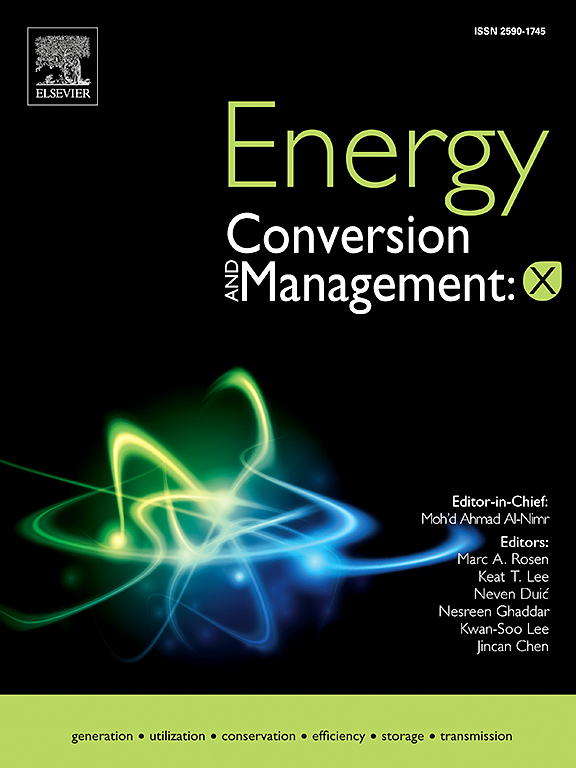Analysis of multicomponent surrogate gasoline blends under pre-ignition conditions
IF 9.9
1区 工程技术
Q1 ENERGY & FUELS
引用次数: 0
Abstract
Pre-ignition is an abnormal combustion phenomenon, in which the fuel–air charge ignites before the spark timing. Pre-ignition is a challenge for boosted gasoline engines, as it may lead to damaging super-knock during the combustion process. The phenomenon may be caused by different initiation mechanisms and the development of robust boosted engines requires understanding of how these mechanisms are formed. This study targeted pre-ignition occurring at hot cylinder surfaces or through bulk gas autoignition by sweeping the intake temperature (30–95 °C) in a single-cylinder spark-ignition engine at high intake pressures (2350 mbar) and a late combustion phasing. Seven different gasoline surrogate blends (composed of the species n-heptane, iso-octane, toluene, cyclopentane, 1-hexene, ethanol and methanol) were evaluated through their limiting intake temperatures for causing pre-ignition. The blend with the highest fraction of cyclopentane (Surrogate A) was found to cause pre-ignition at the lowest intake temperature (30 °C), showing that a fuel with high research octane number and a high tendency for surface ignition can be pre-ignition sensitive. Methanol splash blends and ethanol match blends were shown to be relatively resistant to pre-ignition. Pre-spark heat release of normal cycles was found to be a good indicator for conditions where pre-ignition occurs for each fuel. Chemical kinetic simulations with a tuned mechanism revealed the underlying chemistry behind the first-stage heat release before pre-ignition and established bulk gas autoignition as a realistic pre-ignition mechanism for most of the multicomponent blends studied in this work.

预点火条件下多组分替代汽油混合物的分析
预燃是一种不正常的燃烧现象,即燃料-空气在火花正时之前点火。预点火是增压汽油发动机面临的一个挑战,因为它可能导致燃烧过程中的破坏性超爆震。这一现象可能是由不同的起爆机制引起的,而发展强大的增压发动机需要了解这些机制是如何形成的。这项研究的目标是在高进气压力(2350毫巴)和晚期燃烧阶段的单缸火花点火发动机中,通过扫过进气温度(30-95°C),在高温气缸表面发生预点火或通过散装气体自燃。7种不同的汽油替代混合物(由正庚烷、异辛烷、甲苯、环戊烷、1-己烯、乙醇和甲醇组成)通过它们的极限进气温度来评估引起预着火的可能性。在最低进气温度(30°C)下,环戊烷(替代物A)分数最高的混合燃料可引起预燃,这表明具有高研究辛烷值和高表面着火倾向的燃料可能对预燃敏感。甲醇飞溅混合物和乙醇匹配混合物被证明是相对耐预点火。发现正常循环的预火花热释放是每种燃料发生预点火的良好指标。具有调谐机制的化学动力学模拟揭示了预点燃前第一阶段热释放背后的潜在化学作用,并确定了散装气体自燃是本工作研究的大多数多组分共混物的实际预点燃机制。
本文章由计算机程序翻译,如有差异,请以英文原文为准。
求助全文
约1分钟内获得全文
求助全文
来源期刊

Energy Conversion and Management
工程技术-力学
CiteScore
19.00
自引率
11.50%
发文量
1304
审稿时长
17 days
期刊介绍:
The journal Energy Conversion and Management provides a forum for publishing original contributions and comprehensive technical review articles of interdisciplinary and original research on all important energy topics.
The topics considered include energy generation, utilization, conversion, storage, transmission, conservation, management and sustainability. These topics typically involve various types of energy such as mechanical, thermal, nuclear, chemical, electromagnetic, magnetic and electric. These energy types cover all known energy resources, including renewable resources (e.g., solar, bio, hydro, wind, geothermal and ocean energy), fossil fuels and nuclear resources.
 求助内容:
求助内容: 应助结果提醒方式:
应助结果提醒方式:


